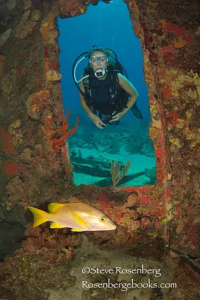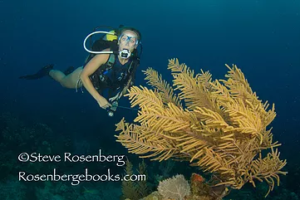Download Dive Travel Guides

Dive Travel Guides Awards
Download Dive Travel Guides
Anyone who likes Scuba Diving Travel should download a dive travel guide. These guides are the best dive travel guides on the market. Dive Travel Guides are eBooks or digital versions of print guidebooks. These comprehensive eBooks will provide everything you need to research a destination, plan your trip and give you lots of information about the destination. These days, virtually everyone travels with some sort of electronic device. These eBooks work well on laptops, tablets and smart phones, as well as on desk top computers. If you want the perfect travel companion for your scuba vacation, take along one of our dive travel guides.
1. There are many benefits to our ebooks.
You can review highlights of a dive just before you enter the water. If you want a suggestion for a great restaurant just before dinner time type “restaurant” in the search feature. To find suggestions for other activities, look up other things you can do. These eBooks contain an extraordinary amount of content; much more than the traditional print guidebooks. Not only do these guides provide detailed information on the most popular dive sites, but also feature chapters on Marine Life, above water activities, and many other topics.
2. Using the eBook.
Upon downloading an eBook to your device, you don’t need to have an Internet connection to use the information in the book. Most features in the guides can be accessed without internet connection. If you want to look up a specific topic, use the electronic Table of Contents or digital search tools. To record memorable encounters or specific highlights from your trip, just add your own notes to the text. This literally turns the dive travel guide into a dive log. To get a better look at the pictures or embedded video, just double tap on the screen. This instantly increases the size of the images or embedded video to full screen on the device. Our Dive Guides are less expensive than print books, and offer much more.
3. Social Media Capabilities and Direct Links.
When you do have an Internet connection, the eBook gives you the ability to utilize social media to share your comments and notes with others. You can also use the live links contained in the book to access the rest of the features, for instance you can find more information or locate related web pages.
4. Award-Winning Dive Travel Guides.
Finally, for several consecutive years, our guides have received prestigious awards in international Media competitions. sponsored. Most recently our guide, Dive and Travel Galapagos, was named the top Travel Guide published in 2017 by the North American Travel Journalists Association. Dive the Bay Islands of Honduras earned a Gold Medal in the eLit Awards competition. Download one of our award-winning guides today and let us know what you think.
5. Options for Dive Travel Guides
The Dive Travel Guides can be downloaded from iTunes, Google Play and Amazon. There are several excellent eBooks for you to take with you on the next dive trip. Check out any of the following eBooks:
- Dive and Travel Grand Cayman, Dive and Travel the Bay Islands of Honduras, Dive and Travel Galapagos or Dive and Travel Cozumel

 The realty is that Cayman’s economy was built in large part upon tourism. One of the main attractions that Grand Cayman provides cruise ship visitors has historically been the warm clear water and the shallow reefs in and around George Town Harbor. Tourists have flocked to Cayman to dive, snorkel and participate in a myriad of water sports and other activities resulting from this natural resource.
The realty is that Cayman’s economy was built in large part upon tourism. One of the main attractions that Grand Cayman provides cruise ship visitors has historically been the warm clear water and the shallow reefs in and around George Town Harbor. Tourists have flocked to Cayman to dive, snorkel and participate in a myriad of water sports and other activities resulting from this natural resource. DEMA, the Dive Equipment and Marketing Association, has also recently weighed in with its opinion that “the construction and operation of this facility will be devastating to the natural coral reefs.” This is based in part on the Environmental Impact Statement commissioned by the Cayman Department of Environment, which found that severe damage would occur due to direct dredging action, turbidity and siltation on the shallow living reefs in and around the Georgetown during construction and additional damage would likely be caused by the on-going dredging required to maintain the berthing facility. It should also be noted that the economic data presented in the Environmental Statement, showed that the Proponent’s argument that ‘the construction of a cruise ship pier would result in an economic benefit to the Cayman Islands” appears to be questionable at best.
DEMA, the Dive Equipment and Marketing Association, has also recently weighed in with its opinion that “the construction and operation of this facility will be devastating to the natural coral reefs.” This is based in part on the Environmental Impact Statement commissioned by the Cayman Department of Environment, which found that severe damage would occur due to direct dredging action, turbidity and siltation on the shallow living reefs in and around the Georgetown during construction and additional damage would likely be caused by the on-going dredging required to maintain the berthing facility. It should also be noted that the economic data presented in the Environmental Statement, showed that the Proponent’s argument that ‘the construction of a cruise ship pier would result in an economic benefit to the Cayman Islands” appears to be questionable at best. It appears that the decision of whether or not to build the cruise ship pier will be a cabinet decision, so all of the legislative assembly members and ministers in the Cayman Government will vote. It should be noted that the daily administration of the islands is conducted by this Cabinet.
It appears that the decision of whether or not to build the cruise ship pier will be a cabinet decision, so all of the legislative assembly members and ministers in the Cayman Government will vote. It should be noted that the daily administration of the islands is conducted by this Cabinet. (Caymanian status holders or Caymanians defined as Cayman born w/ Caymanian parents or grandparents) in the Cayman Islands. It would be a difficult task to assemble that amount of support, but such vote would only require a simple majority to reject the proposal. Sources close to the group have indicated that this effort may very well delay the outcome of this issue or perhaps force a compromise solution to be put in play.
(Caymanian status holders or Caymanians defined as Cayman born w/ Caymanian parents or grandparents) in the Cayman Islands. It would be a difficult task to assemble that amount of support, but such vote would only require a simple majority to reject the proposal. Sources close to the group have indicated that this effort may very well delay the outcome of this issue or perhaps force a compromise solution to be put in play.